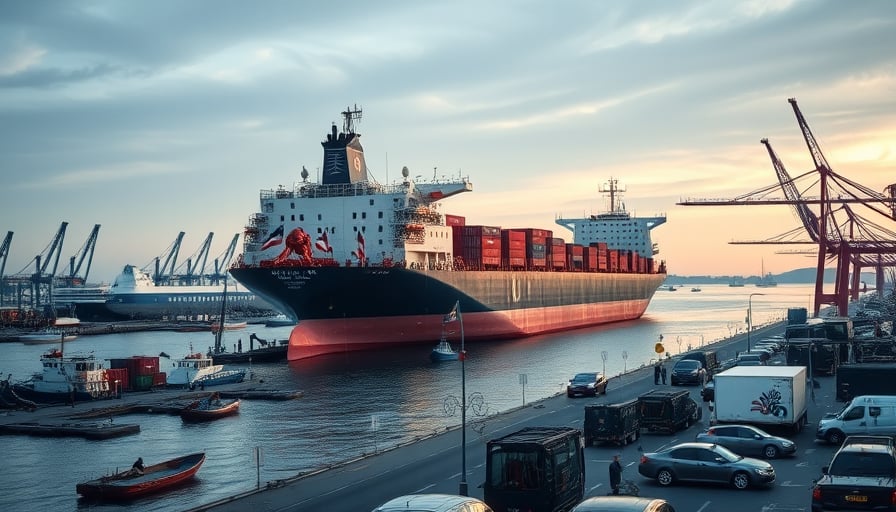Hapag‑Lloyd AG: Strategic Momentum Amidst a Volatile Trade Landscape
Hapag‑Lloyd AG, the German container shipping line listed on Xetra with a market capitalization of €21.85 billion, has continued to demonstrate resilience and proactive positioning in the face of tightening global trade conditions and escalating environmental demands.
1. Robust First‑Half 2025 Volumes
On 29 October 2025, Hapag‑Lloyd announced that its freight volumes for the first half of the year surpassed the record set by COSCO, the largest increase among all major carriers. The company’s fleet, operating across sea, road, rail and inland waterway segments, reported a 12 % rise in container throughput relative to the same period in 2024. This growth underlines the persistence of demand for multimodal logistics, particularly in the Asia‑Pacific corridor, and positions Hapag‑Lloyd to capture a larger share of the rebound in global trade after the pandemic‑related disruptions.
2. Completion of the Hamburg Express Class
In a complementary development, Hapag‑Lloyd officially named the last vessel of its 24,000 TEU Hamburg Express class a dual‑fuel LNG‑powered ship. The vessel, constructed by a leading German shipyard, marks the culmination of a 24‑month new‑build programme designed to reduce greenhouse‑gas emissions by up to 30 % compared with conventional marine fuels. The decision to equip the final ship with LNG propulsion signals the company’s commitment to the industry’s decarbonisation trajectory while maintaining operational flexibility across port infrastructures that still lack full LNG bunkering facilities.
3. Expansion of the Asia‑Europe Corridor
Further diversifying its route network, Hapag‑Lloyd joined forces with CMA CGM and MSC to launch a new high‑frequency link between Gothenburg and the Pearl River Delta. The service, announced on 29 October 2025, will provide daily sailings during the peak summer season, thereby tightening the logistics chain between Germany’s major port hubs and China’s manufacturing heartland. By synchronising schedules with its partners, Hapag‑Lloyd enhances service reliability and offers customers a more predictable transit time—an increasingly valuable attribute in the current climate of supply‑chain volatility.
4. Strategic Terminal Investment – Hanseatic Global Terminals
In an interview published by Welt on 1 November 2025, Dheeraj Bhatia, CEO of Hanseatic Global Terminals (HGT), highlighted the growing strategic importance of terminal ownership for shipping operators. He noted that geopolitical tensions and trade protectionism could make access to secure, well‑connected port facilities more competitive. HGT, a wholly owned subsidiary of Hapag‑Lloyd, is pursuing a portfolio strategy that targets high‑growth terminals across Europe and Asia. By expanding its terminal footprint, Hapag‑Lloyd intends to secure its supply‑chain position, generate new revenue streams, and strengthen customer relationships through integrated services.
5. Market Context and Outlook
The company’s share price, which closed at €124.60 on 30 October 2025, remains comfortably within the 52‑week range of €108.30 to €171.80, reflecting investor confidence in Hapag‑Lloyd’s strategic initiatives. With a price‑earnings ratio of 9.25, the stock appears attractively priced relative to peers in the container shipping sector, which traditionally trade at lower multiples due to industry cyclicality.
Looking forward, Hapag‑Lloyd’s focus on fleet decarbonisation, network expansion, and terminal integration positions it well to capture the upside of the global trade recovery while mitigating regulatory and market risks. The company’s ability to deliver cost‑effective, low‑emission services across a diversified multimodal platform will likely continue to be a key differentiator in an industry increasingly driven by sustainability and resilience.
